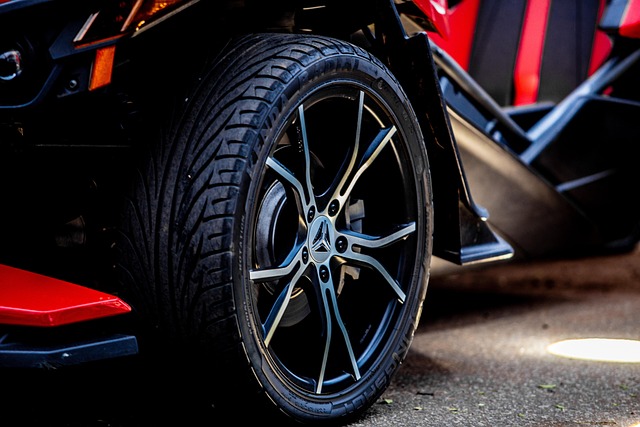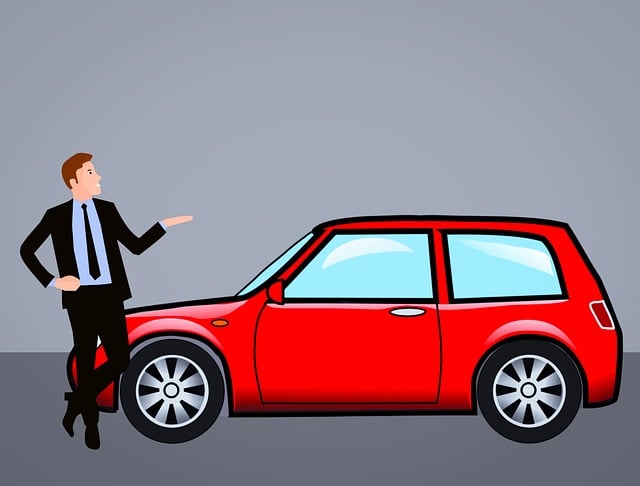Looking to register your car in California? This comprehensive guide walks you through the entire process, ensuring a smooth experience. From understanding vital requirements and gathering essential documents to completing the registration application accurately, we’ve got you covered. A key step involves a dmv vin verification, which confirms your vehicle’s identity. Once approved, pay the registration fees and receive your license plate, officially making your car roadworthy in California.
- Understand California Vehicle Registration Requirements
- Gather Necessary Documents for Car Registration
- Visit Your Local DMV for VIN Verification
- Complete the Registration Application Form Accurately
- Pay Registration Fees and Receive Your License Plate
Understand California Vehicle Registration Requirements

Before registering your vehicle in California, it’s crucial to understand the state’s specific requirements for vehicle registration and the importance of a proper DMV VIN verification. In California, all vehicles, whether new or used, must be registered with the Department of Motor Vehicles (DMV) within 30 days of establishing residency or purchasing the vehicle. This process involves providing necessary documentation, passing emissions testing, and conducting a thorough vin inspection to ensure the vehicle’s authenticity and safety.
A unique Vehicle Identification Number (VIN) serves as a critical component during this process. The DMV utilizes the VIN for tracking purposes and ensures that all vehicles on California roads meet safety standards. For convenience, many residents opt for mobile vin verification or mobile vin inspection services, allowing them to complete this initial step of registration from the comfort of their homes. This modern approach streamlines the traditional process, making it more accessible and efficient for California drivers.
Gather Necessary Documents for Car Registration

Before heading to the California Department of Motor Vehicles (DMV) to register your car, make sure you have all the required documents in order. This process is essential for a smooth and efficient registration experience. Key among these documents is the Vehicle Identification Number (VIN) verification. The DMV will need this unique 17-character code to confirm the vehicle’s identity and history.
You’ll also require proof of insurance, which includes your insurance card or policy declaration page. A valid registration certificate from the previous state where the car was registered is another crucial document. Additionally, a completed Vehicle Registration Application form is essential. If you’re opting for a mobile vin inspection or using a mobile vin verifier, ensure that the verification report is up-to-date and accurate, as this will streamline the process significantly.
Visit Your Local DMV for VIN Verification

To register your car in California, you’ll need to undergo a crucial step: DMV VIN verification. This process involves visiting your local Department of Motor Vehicles (DMV) office, where they’ll cross-reference your vehicle’s unique Vehicle Identification Number (VIN) with their records. It’s essential for ensuring the car’s history is clear and matches the details provided by the seller. The DMV will inspect the vehicle to confirm its authenticity, which includes checking for any outstanding issues or reported damages.
This verification process is often streamlined with modern technology, such as mobile VIN verifiers or vin inspection services, making it more convenient for both consumers and DMV staff. By utilizing these tools, you can save time while ensuring a thorough check, ultimately facilitating the registration process. Remember to bring all necessary documents related to the vehicle’s ownership and history when visiting your local DMV for this critical step.
Complete the Registration Application Form Accurately

When registering your car in California, accurately completing the Registration Application Form is crucial. Double-check all information for accuracy, including your personal details and vehicle specifications. One critical step involves conducting a DMV VIN verification using the Vehicle Identification Number (VIN). This process ensures that your car meets all legal standards and helps expedite the registration process.
For added convenience, consider utilizing a mobile vin inspection or a vin verifier app to complete this step remotely. These services allow you to verify your vehicle’s history and condition from the comfort of your home. Ensure that the information gathered through these methods aligns with what is on the application form to avoid delays or rejections during the car registration process.
Pay Registration Fees and Receive Your License Plate

After completing your vehicle’s registration application and gathering all necessary documents, it’s time to pay the registration fees. These fees vary based on the type of vehicle and its age, so make sure to check the California DMV website for accurate and up-to-date information. You can typically pay online or at a local DMV field office using a credit card, debit card, or personal check. Once your payment is processed, you’ll receive a temporary registration permit, allowing you to legally operate your vehicle on California roads while waiting for your official license plate.
When ready, the DMV will schedule a time for you to obtain and install your license plates. You can often do this at the same location where you paid your fees, or some locations offer dedicated plate-issuing centers. During this process, they’ll perform a DMV VIN verification, cross-checking your vehicle’s unique Vehicle Identification Number (VIN) with their records to ensure it matches the details in your application. For convenience, many residents opt for mobile vin verification services, which allow them to complete this step from the comfort of their homes or offices, further streamlining the registration process.
Registering a car in California is a straightforward process that involves understanding specific requirements, gathering essential documents, and visiting your local DMV for VIN verification. By completing the registration application form accurately and paying the necessary fees, you’ll receive your license plate, ensuring your vehicle complies with state regulations. Remember to keep your documentation up-to-date for smooth future interactions with the DMV.
